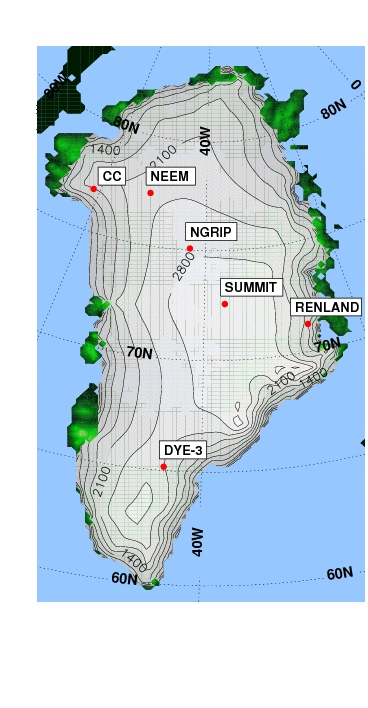Climate change, meteorology, ice sheet dynamics and thermodynamics, modelling future and palaeoclimates.
Research areas
I have been a researcher for the European project Past4Future and the NERC funded iGlass consortium. I am currently funded on an ERC Adanced Grant called T-GRES, led by Professor Richard Pancost.
T-GRES
This project aims to provide a globally integrated and model supported step change in understanding of the continental climate and biogeochemistry during Cenozoic greenhouse periods (namely the Eocene, 56-34 Ma) focussing on:
- continental temperatures
- global hydrological regime
- terrestrial biogeochemical processes (carbon and methane cycling).
iGlass
This project, which comprises 7 UK research organisations, invesigates the response of ice volume/sea level to different climate states during the last 5 interglacial periods, some of which include sea level significantly higher than today. By identifying the potential sea level contributions from the Greenland and Antarctic ice sheets during warmer than present periods we can aim to constrain future sea level projections. A key outcome will be to place sound limits on the likely ice volume contribution to maximum sea level rise scenarios for the end of the next century and beyond. My part of this project aims to assess the range of possible ice sheet configurations under a range of interglacial climate states and model uncertainties by addressing the following:
- Use palaeodata synthesised by iGlass to evaluate the extent to which model climates are consistent with the observations
- Understand the reasons for differences in the climate between different interglacials
- Use the derived suitable climate model data to force an ice sheet model in order to assess the implications of the varied interglacial climates on the ice sheets of Greenland and Antarctica.
Past4Future

This project, which has 22 collaborative partners, investigates the climate and environment of past warm periods (interglacials) to inform on future climate and possible abrupt changes that might occur. The low resolution climate model FAMOUS is used extensively to investigate the following:
- Last Interglacial (LIG) (130 to 120,000 yrs ago) and Present Interglacial (PIG) (6 to 0ka) transient climate simulations
- Sensitivity to applied forcings and feedback during both interglacials including greenhouse gases, ice-sheets, vegetation and orbital forcing
- Evaluation of sensitivity of interglacial climates to sudden freshwater events (specifically the 8,200 BP year event)
- Evaluation of the state of the Greenland ice sheet during the LIG where the HadCM3 climate model is coupled to an ice sheet model.
PhD research
Work supervised by Dr Daniel Lunt and Professor Paul Valdes. This research was funded by a NERC studentship.
In recent years the effect of anthropogenic warming on the Earth's ice sheets has become an increasingly worrying issue. Complete melting of the Greenland and Antarctic ice sheets would raise sea level by around 70 m. Furthermore, the climate could be altered significantly by reducing the reflectivity of the Earth's surface with the removal of the highly reflective ice sheets, leading to additional warming.
This project focussed on the impact of vegetation feedbacks on the behaviour of the Greenland ice sheet under past and future climates. Previous work using full GCMs has either not included a dynamic ice-sheet model (e.g. Toniazzo et al., 2004) and/or a vegetation model (e.g. Lunt et al., 2004). As a result the following questions have been addressed:
- Parametric uncertainty in ice sheet models (see our paper on this)
- If CO2 concentrations were reduced to near pre-industrial values after complete deglaciation would the ice sheet begin to regrow? What is the role of vegetation feedbacks? To see our results please take a look at this paper.
- Is vegetation important in predicting the minimum extent of the Greenland ice sheet during the Last Interglacial (130,000 years ago)?

Potential regrowth of the GrIS for different surface types.